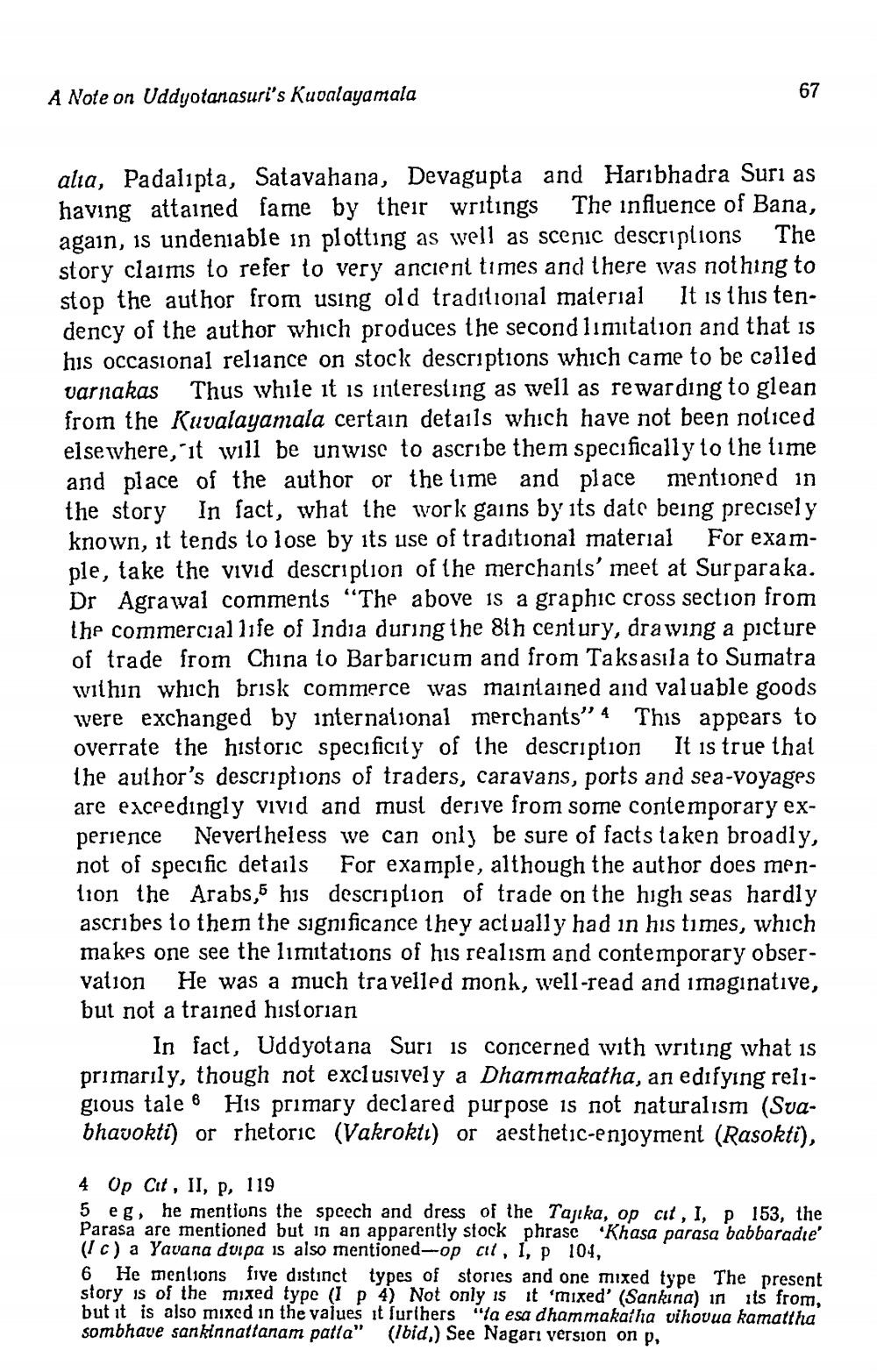________________
A Note on Uddyotanasuri's Kuvalayamala
alia, Padalipta, Satavahana, Devagupta and Haribhadra Suri as having attained fame by their writings The influence of Bana, again, is undeniable in plotting as well as scenic descriptions The story claims to refer to very ancient times and there was nothing to stop the author from using old traditional material It is this tendency of the author which produces the second limitation and that is his occasional reliance on stock descriptions which came to be called varnakas Thus while it is interesting as well as rewarding to glean from the Kuvalayamala certain details which have not been noticed elsewhere, it will be unwise to ascribe them specifically to the time and place of the author or the time and place mentioned in the story In fact, what the work gains by its date being precisely known, it tends to lose by its use of traditional material For example, take the vivid description of the merchants' meet at Surparaka. Dr Agrawal comments “The above is a graphic cross section from the commercial life of India during the 8th century, drawing a picture of trade from China to Barbaricum and from Taksasila to Sumatra within which brisk commerce was maintained and valuable goods were exchanged by international merchants" 4 This appears to overrate the historic specificity of the description It is true thal The author's descriptions of traders, caravans, ports and sea-voyages are exceedingly vivid and must derive from some contemporary experience Nevertheless we can only be sure of facts taken broadly, not of specific details For example, although the author does mention the Arabs, his description of trade on the high seas hardly ascribes to them the significance they actually had in his times, which makes one see the limitations of his realism and contemporary observation He was a much travelled monk, well-read and imaginative, but not a trained historian
In fact, Uddyotana Suri is concerned with writing what is primarily, though not exclusively a Dhammakatha, an edifying religious tale 6 His primary declared purpose is not naturalism (Suabhavokti) or rhetoric (Vakroktı) or aesthetic-enjoyment
SYICIILE
Rii)
4 Op Cit, II, p. 119 5 eg, he mentions the speech and dress of the Tajika, op cit, 1, p 153, the Parasa are mentioned but in an apparently stock phrase Khasa parasa babbaradie' (1 c) a Yavana duipa is also mentioned-op cit, I, p104, 6 He mentions five distinct types of stories and one mixed type The present story is of the mixed type (1 p 4) Not only is it 'mixed' (Sankina) in its from, but it is also mixed in the values it furthers "Ya esa dhammakatha vihovua kamattha sombhave sankinnattanam patia" (ibid) See Nagari version on p,




